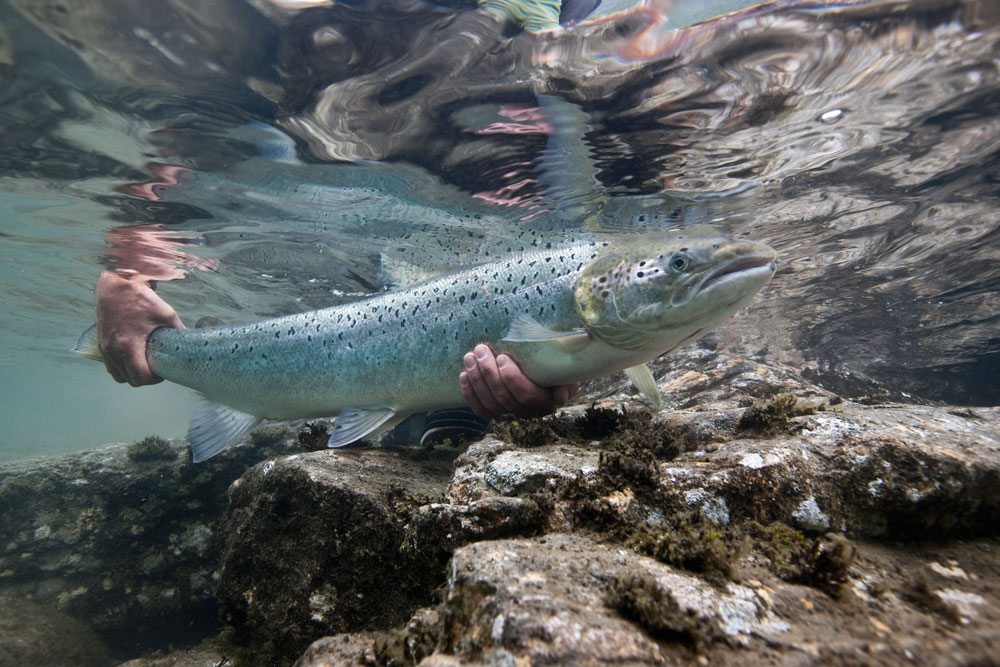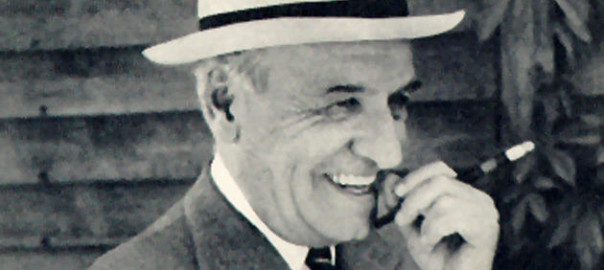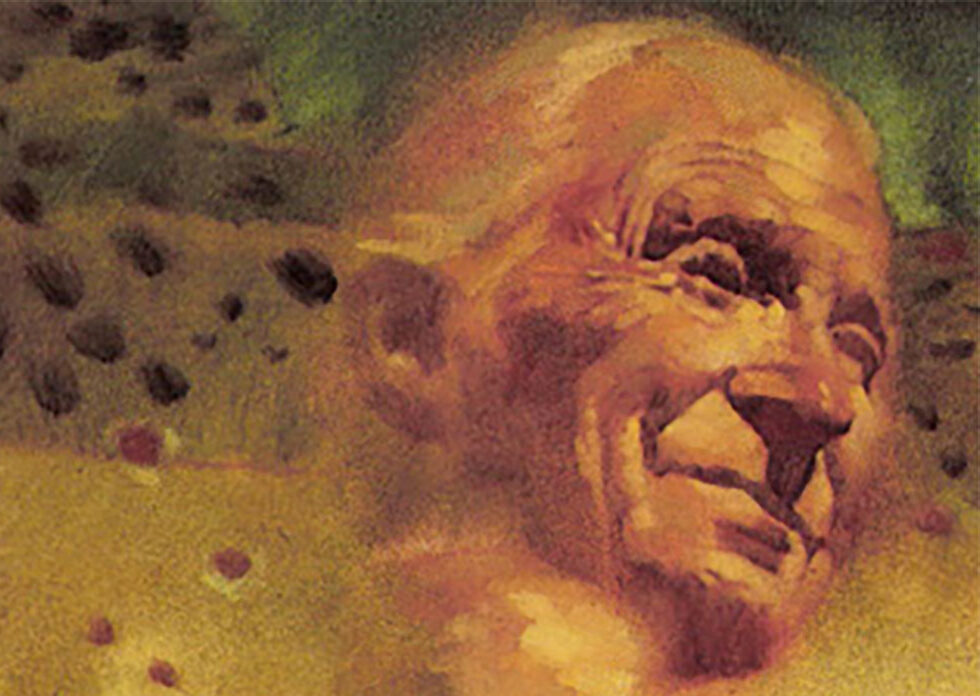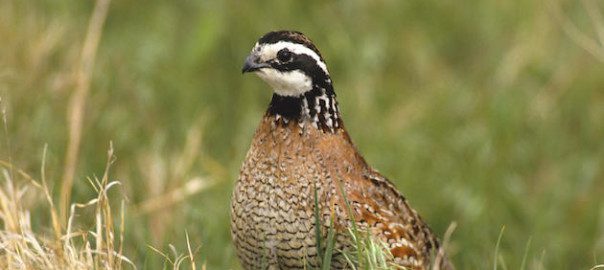There were pines in between the river and the rock cliff so I could not walk downstream to catch my salmon. I had to stay in one place, cast and drift.
“Fish on!” Al yelled, and we scrambled down the path that led from Dam Camp to The Basin. Three of us hung over the steep cliff that overlooked that pool and watched a fine Atlantic salmon jump out of the water ten feet from the ledge upon which Al stood.
“Bow to the salmon and then get your rod tip up fast when he hits the water,” shouted Sandy, Al’s guide and net-man. “Play him, let him run.”
Sandy quickly dropped from the top of the cliff, down thirty feet of wooden ladder to the rock shelf beside his client. “An after-breakfast fish, the best kind,” Sandy said and grinned. “Silver, looks like a fresh one.”
All of us were eager to see Al fight his first Atlantic salmon. We shouted as the fish leaped again, a big silver curve surrounded by spray. “Yep,” said our group’s most experienced salmon fisherman, Rob. “It’s fresh from the bay, probably came up the river last night. The six-inch rise we got in the river from yesterday’s rain is paying off. Looks like some new fish followed that bump upriver. That one looks like a fifteen pounder. Did you see the hooked jaw? Not a grilse, that’s for sure. Al’s got a big-boy on.”
Our party drove to the Northwest Miramichi River in New Brunswick yesterday. All of us hail from New Hampshire. Three of us had fished the club before and had landed salmon. This was Al’s first trip for Atlantic salmon. He was an experienced trout fisherman, and a salmon on a dry fly was a life’s dream. One that, as his rod bucked, bent and shook in his hands, he was busy living now.
We were all eager to fish, but this was Al’s first. We stayed to watch the fight. We had eight days of fishing booked on the river–four days at Dam Camp, four days at Adams Camp. A guide/net-man for every two fishermen, comfortable beds in each camp’s cabin, a cook, outhouse, no electricity, no cell service, just the river and the salmon. And good companions. For a fly fisher, a little bit of heaven.
Our last taste of town life had been yesterday afternoon, when we stopped at Doak’s Fly Shop, in Doaktown, New Brunswick. We all had looked forward to looking at the flies and equipment in this world-renowned fly fisherman’s shop. Butterflies, Green Machines, Ally’s Shrimp, Shady Ladies, Bombers, Blue Charms, tippets and fly tying material – we shopped and talked salmon prospects. There had been rain throughout July. Good news: the river was up and running clear; fish were in and active. We smiled and drove on – with big silver-sided salmon in our thoughts – along rocky dirt roads and down a steep tractor trail, across an almost wheel-high stream into Dam Camp.
The fishermen’s quarters were on top of a cliff overlooking the stream. Our guides, Sandy and George, met us and helped us unload. In the dusk they pointed out pools and runs in the river below. We heard a big fish splash. “He’ll be waiting for you tomorrow,” George said. “He’s fresh and feisty.”
Supper, then rigging and organizing by flashlight and Coleman lantern. We talked and went to sleep, eager for the morning.
The morning came and so did Al’s fish. Sandy had recommended a brown Bomber with white ends. Before his breakfast the guide had spotted several large salmon in The Basin. Sandy thought that the best chance for a fish on a dry fly was there. He was right, and all of us now watched as Al continued to fight his fish.
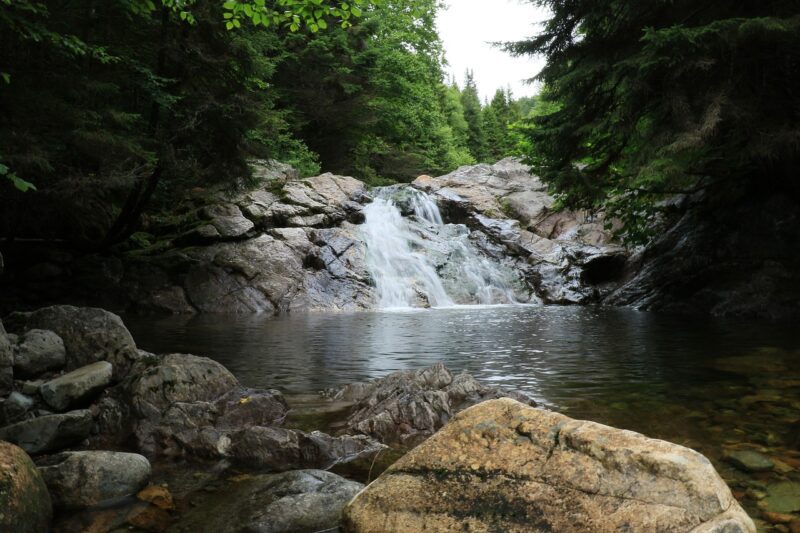
More line ran from the reel. Another jump and Al remembered to bow to the salmon to give him some slack. Into the water and another run – this time taking twenty feet of line and then into the air again, shaking and splashing. His grin almost split his face. Then, a leap and another bow as Al “paid his respects.” More line out. Sandy worked his way downstream about thirty feet and was standing with one foot on the ledge and with the other on a rock a foot under water.
The fish was coming down the channel away from Al toward him. Another jump. The fish spotted Sandy and veered upstream. Al frantically reeled in slack. The fish was out of the water again, but finally tiring. Sandy walked upstream on his ledge for ten feet. Al fought the fish in closer, the curved eight-weight rod jumping in his hand. Sandy got his long-handled net ready.
“Try to lift him when I yell. I’ll sweep the net tail to head.”
Al grunted and nodded. The fish came closer. Sandy was ready and Al was more than ready. The fish wasn’t, and reeled off another ten feet. But, that was its final run. Al reeled in the exhausted fish, and Sandy’s net flashed. Al’s first fish – close to fifteen pounds – was in the net. A fifteen-minute fight. The fine fish, upon being released, swam strongly back into the pool. We whooped, we hollered – Al’s first!
That night we celebrated Al’s salmon – the first of the trip. Rob, Bill and I came with tales of our own – of grilse in the net and lost salmon, but Al’s fish was the one shining in stories that night, a wild, strong, leaping, beautiful piece of silver.
The next morning after breakfast, Bill and I teamed up with George and walked downstream. I chose to fish Black Pool and Bill took Black Pool Run. My casting position was high on a rocky point twenty feet over the stream. Wet fly here – I tied on a Green Machine. Cast and drift. George spotted several fish near the tail of the pool, but wanted me to cover the water up to them “just in case.” I let out twenty feet of line with ten feet of tippet – just enough to fish a few feet of water.
Forty-five degree angle, cast and drift. Another two feet of line, cast and drift, again and again. There were pines in between the river and the rock cliff so I could not walk downstream. I had to stay in one place, cast and drift. Forty-five degrees, forty feet of line, fifty feet, cast and drift, then sixty feet of line plus the tippet. The Green Machine was finally over the nose of the first fish George had spotted – another two feet, a tug and an explosion out of the water.
“Fish on!” I yelled.
“We are going to have to gradually walk fifty feet to a path to the shore. There’s a little rock beach there. You’ll have to keep your rod and line high to clear the pines.” George smiled. “It’s a bit of a pickle, but we’ve done it before.”
“Yeah,” I said. “It’ll be fun,” thinking to myself: how the heck can I do this. Got to keep a jumping rod and running line out of those pines and bushes – fifty feet of them. And then walk down a steep slope to that bench – with a jumping, running salmon shaking the rod and messing with the line. “Yeah, it’ll be fun.”
“We have to tire him out a bit before we start to move. No way to bow to the salmon if he jumps and the rod is just above the trees. Play ‘em and then we’ll move.”
Three jumps and three runs later George said, “Now, we move. Slowly.” The fish didn’t jump. In fact, I was able to get some line in. And that lovely bend in the rod was over the trees. Move slowly. Watch where you put your feet. Don’t trip, stumble or get pulled off balance, rod jumping in my hand. Down the path. Rocks and roots. Balance, balance, watch the rod, keep it out of the brush and finally, on the beach.
My salmon – I certainly considered it mine now – was still tugging, but I had reeled in thirty feet of line. George was downstream of me as I brought the fish closer and closer. Ten feet away the salmon suddenly ripped off fifteen feet of line and jumped out of the water one last time. Then I reeled him slowly to George and his waiting net. A wonderful fish – seven pounds. Just right. If he’d been a large one, I don’t think I’d have gotten him over and through the trees.
“That’s the first one we’ve landed over the trees this season. We’ve lost nine. Tenth time’s the charm.”
I smiled and agreed.
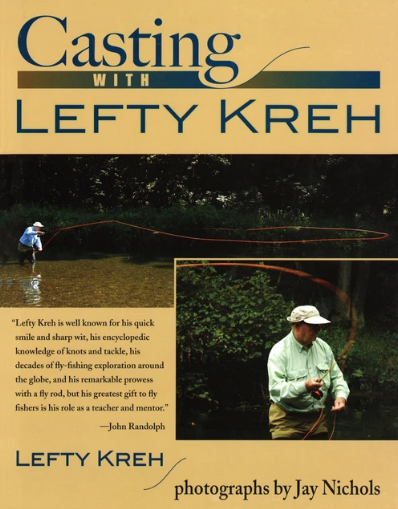 With over 40 casts covered in step-by-step detail in over 1,200 full-color photographs. Casting with Lefty Kreh is the perfect reference for the fly fisher who wants to improve his skills. Casting should be nearly effortless. Understand the physics and the dynamics of casting and how to adapt to various fishing conditions and your casting will greatly improve. That has been Lefty’s philosophy since he began teaching fly casting over fifty years ago.
With over 40 casts covered in step-by-step detail in over 1,200 full-color photographs. Casting with Lefty Kreh is the perfect reference for the fly fisher who wants to improve his skills. Casting should be nearly effortless. Understand the physics and the dynamics of casting and how to adapt to various fishing conditions and your casting will greatly improve. That has been Lefty’s philosophy since he began teaching fly casting over fifty years ago.
By fishing all over the United States and many parts of the world, Lefty learned the techniques experts use on different waters, in every situation imaginable. He shares that knowledge here through easy-to-understand instructions and full-color photographs the show exactly how to make every important cast. Buy Now

